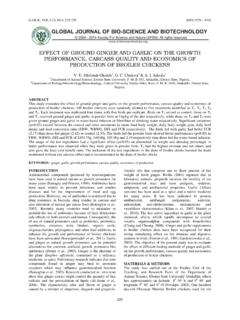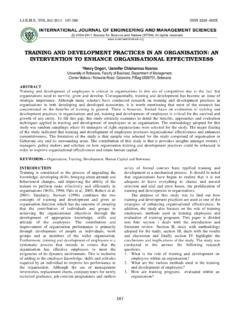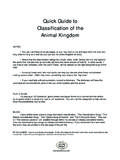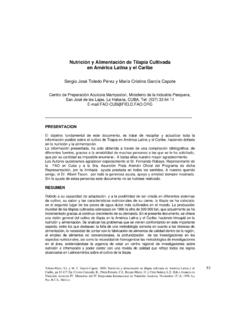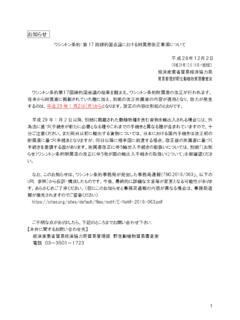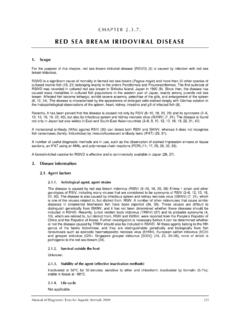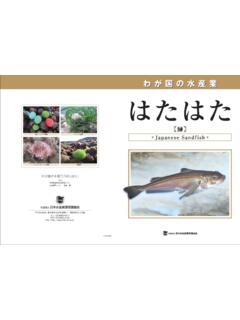Transcription of DIVERSITY OF FISH FAUNA IN A WATER BODY …
1 , (1)2013:63-66 ISSN2278 910363 DIVERSITY OF FISH FAUNA IN A WATER body RECEIVINGEFFLUENT FROM NAGAON paper MILL IN ASSAMU jjayanta Das1and Sabitry Bordoloi21 Department of Zoology, Dhing College, Dhing, Nagaon, laboratory,Life Sciences Division, Institute of Advanced Study in Science and Technology,Paschim Boragaon, Guwahati-781035 ABSTRACTE ffluents from paper mills are of concern asthesemight pollute the neighbouring WATER bodies. Treated WATER fromJagiroad paper mill reaches the Taranga beel through two outlets from the paper mill. The present study was carried out tosee whether there has been some effect on the species composition of fishes in this beel over the years. Certain physicochemical parameters and DIVERSITY of fishes had been studied for a period of one year.
2 Comparison of data with a controlsite has revealed that the beel harbours mostly fish species adapted to hypoxic :Fish DIVERSITY , wetland (Elenga/taranga beel), Jagiroad, andpaper mill effluent is a major pollutant for theneighbouring waterbodies. Benthic macro invertebrate andfish communities in recipient lakes and streams often havefewer species, lower densities, and altered taxonomiccomposition Kelso (1977). In addition to lethal effects,pulp and paper mill effluent has been shown to have manysub lethal effects on fish. These include liver dysfunctionOikari & Nakari (1982), tainting of fish tissues, reducedgrowth rates Whittle & Flood (1977), and avoidance ofpolluted waters Kelso (1977). The present study includesassessment of certain physico chemical parameters of thebeel WATER and fish DIVERSITY over a period of one year tostudy the possible effect of treated waste WATER from papermill on the ecology and DIVERSITY of the fishes in selectedsites of the Elenga / Taranga beel in Jagiroad in theMorigaon district of of the Study areaJagiroad is located about 50 km east ofGuwahatiand 24km south industry of the town is theNagaon paper Mill, run by Hindustan paper CorporationLtd.
3 At Jagiroad, at the intersection of 92o4/East longitudeand 21o2/North Latitude. The Elenga / Taranga beel(approximate 1,704 Sq ) is located near the Industrialunit. This system receives ETP discharge and wastewaterfrom Nagaon paper Mill of HPC Ltd. Two outlets from thepaper mill containing differenttypes of sludge ultimatelyreach the beel ecosystem and cause siltation problem. Inthe lean season a small rivulet is seen but during rainyseason, the entire low lying area becomes inundated andturns into a single WATER body . The study was taken upduring August 2010 to July sitesA. Ellenga Beel at Belguri, JagiroadThe WATER body is in the village area. Vegetable and paddycultivation is done in its vicinity. There is luxuriant growthof WATER hyacinth.
4 The beel is Surrounded by forest River flows by the area. The beel is located at theintersection of 92o4/East longitude and 21o2/NorthLatitude and 195 meters Ellenga Beel System Pond, Jagiroad, site isnear HPC Nagaon paper Mill outlet. Samplingsite was selected on the other side of the bridge in thepond towards HPC Jagiroad. The pond is partiallycovered by WATER siteControl samples were collected from the Tolibor beel,Nagaon district, Assam situated at a distance of 60 Kmsfrom the paper average annual rainfall recorded during the studyperiod was mm (annual average Rainfall 2006 2010; IMD) and temperature in winter varies from amaximum of C to a minimum of C whilesummer temperature varies between C to annual average maximum temperature is C andthe minimum is were collected seasonally from the beel so thatfishes present in all the seasons could be use indigenous gears like cast net, hook andbaits and other common gears for fishing.
5 The collectedspecimens were preserved in 6% formaldehyde by givingan abdominal incision to the specimen. Fish specimenwere brought to thelaboratory and identified with the helpof standard literature viz Jayaram (1999), Talwar andJhingran (1991) and Sen (1985). WATER samples were collected at monthly intervalsfromthe study area as well as from the control area. Tomaintain uniformity ofthe data sampling time and placeweremaintainedthroughoutthe period of study. Theparameters studied includeair temperature,waterDiversity of fish FAUNA in Nagaon paper mill in Assam64temperature,pH,turbidity,dissolve oxygen, free carbondioxide andtotal alkalinity. Physico-chemical parameterswere analysed following APHA (1998).RESULTSF ishes were recorded from the experimental site as well asthe control site.
6 The data is presented in Table-1 and table2 respectively. Eleven species of fishes belonging to eightgenera, seven families, four orders havebeen recordedfrom the study area (Site 1-Elenga / Taranga beel,Jagiroad, Morigaon, Assam.) during the period of study(2010 11).Twenty-two species of fishes belonging to sixteen genera,ten families, six orders have been recorded from thecontrol area (Site 2-away from industrial area).TABLE of the fishes recorded in the Taranga beel and their local name, common name and conservation status asper IUCN PositionScientific NameCommon Name(English)Local Name(Assamese)IUCNS tatusOrder:Osteoglossiformes1 Family: NotopteridaeNotopterus notopterus(Pallas, 1769)Grey featherbackKanduliLRntOrder: Siluriformes2 Family: ClaridaeClarius batrachus(Linnaeus,1758)MagurMahgurVUL3 Family:ClaridaeHeteropneustes fossilis(Bloch, 1794)Stinging catfishSingeeVULO rder:Symbranchiformes4 Family: SymbranchidaeMonopterus cuchia(Hamilton, 1822)Gangetic mureelKuchiaLRntOrder: Perciformes5 Family: NandidaeNandus nandus(Hamilton, 1822)Mottled nandusGedgediLRnt6 Family: AnabantidaeAnabas testudineus(Bloch 1792)Climbing perchKawoiDD7 Family.
7 BelontidaeTrichogaster fasciataBloch & Schneider, 1801 Banded gauramiKhalihonaLRnt8 Family: ChannidaeChanna striatus(Bloch, 1793)StripedsnakeheadSholLRlc9 Family: ChannidaeChanna punctatus(Bloch, 1793)SpottedsnakeheadGoroiLRnt10 Family: ChannidaeChanna stewartii(Playfair, 1867)AssamesesnakeheadChengaleeNE11 Family: ChannidaeChanna marulius(Hamilton, 1822)Giant snakeheadSalLRntLRnt-Lower risk near threatened; VUL-Vulnerable; LRlc-Lower risk least concern;NE-Not evaluated; DD Data OF FISHES COLLECTED FROM CONTROL AREATABLE of the fishes recorded in the control area (Tolibor beel) and their local name, common name andconservation status as per IUCN VertebrataClass PositionScientific NameCommon Name(English)Local Name(Assamese)IUCNS tatusOrder:Osteoglossiformes1 Family: NotopteridaeNotopterus notopterus(Pallas, 1769)Grey featherbackKanduliLRnt2 Family: NotopteridaeChitala chitala(Hamilton, 1822)HumpedfeatherbackChitalNTOrder: , (1)2013:63-66 ISSN2278 9103653 Family: ClupeidaeGudisia chapra(Hamilton, 1822)Indian River ShadKaratiLRlcOrder: Cypriniformes4 Family: CyprinidaePuntius ticto(Hamilton, 1822)Two spot barbChakari puthiLRnt5 Family: CyprinidaePuntius sarana(Hamilton, 1822)Olive barbSannee puthiVUL6 Family.
8 CyprinidaeCatla catla(Hamilton, 1822)CatlaBhokuaVUL7 Family: CyprinidaeCirrhinus cirrhosus(Bloch,1795)MrigalMirikaLRnt8 Family: CyprinidaeCirrhinus reba(Hamilton, 1822)Reba carpLachimVUL9 Family: CyprinidaeLabeo gonius(Hamilton, 1822)Kuria labeocourieLRnt10 Family: CyprinidaeLabeo rohita(Hamilton, 1822)RohuRauLRnt11 Family: CyprinidaeLabeo calbasu(Hamilton, 1822)Black rohuMalheeLRntOrder: Siluriformes12 Family: SiluridaeWallago attu(Bloch & Schneider, 1801)BoalBaraliNT13 Family: ClaridaeClarius batrachus(Linnaeus,1758)MagurMahgurVUL14 Family:ClaridaeHeteropneustes fossilis(Bloch, 1794)Stinging catfishSingeeVULO rder:Symbranchiformes15 Family: SymbranchidaeMonopterus cuchia(Hamilton, 1822)Gangetic mureelKuchiaLRntOrder: Perciformes16 Family: NandidaeNandus nandus(Hamilton, 1822)Mottled nandusGedgediLRnt17 Family: AnabantidaeAnabas testudineus(Bloch 1792)Climbing perchKawoiDD18 Family: BelontidaeTrichogaster fasciataBloch & Schneider, 1801 Banded gauramiKhalihonaLRnt19 Family: ChannidaeChanna striatus(Bloch, 1793)Striped snakeheadSholLRlc20 Family: ChannidaeChanna punctatus(Bloch, 1793)SpottedsnakeheadGoroiLRnt21 Family: ChannidaeChanna stewartii(Playfair, 1867)AssamesesnakeheadChengaleeNE22 Family: ChannidaeChanna marulius(Hamilton, 1822)Giant snakeheadSalLRntEn-Endangered; LRnt-Lower risk near threatened; VUL-Vulnerable; LRlc-Lower risk least concern; NE-Not evaluated;NT Near threatened.
9 DD Data abiotic parameters wereanalyzedat monthly interval and data has been presented in Table Riverduringmonsoon (June-August) and during winter (December-February) the area becomes partially of fish FAUNA in Nagaon paper mill in Assam66 TABLE-3:Monthly variation of Physico-chemical parameters of WATER of the study Site-1: Taranga beel; Site-2: (oC)W. Temp (oC) (mg-L) (mg-L)S1S2S1S2S1S2S1S2S1S2 Elenga / Taranga beel remains inundated duringmonsoon (June-August) period with WATER from the riverkilling. In fact these areas turnvirtually into severalconfined WATER bodies during winter (December-February)and the beels become partially dry. Though there is notmuch variation in temperature data and pH, DO and Totalalkalinity showed much variation.
10 Thelow DO level canbe attributed to the fact that only fish species adapted tohypoxic condition are found in the beel. Scrimgeour(1989) while studying effects of paper mill effluent onmicro invertebrates and fish populationfound thattaxonomic richness and species DIVERSITY of invertebrateswere highest in unpolluted sites. Catch of fishes was times higher in unpolluted sites. Avoidance of watersreceiving paper mill effluent by fish has been observed invarious studies. Kelso (1977) found that yellow perch(Perca flavescens) were numerically dominated in areasuninfluenced by mill effluent in Nipigon Bay, LakeSuperior, but were rare in areas where effluent was mostconcentrated. Similar results were obtained in the presentinvestigation also where eleven species were recorded inthecontaminated site andtwenty two species could berecorded from unpolluted site.
